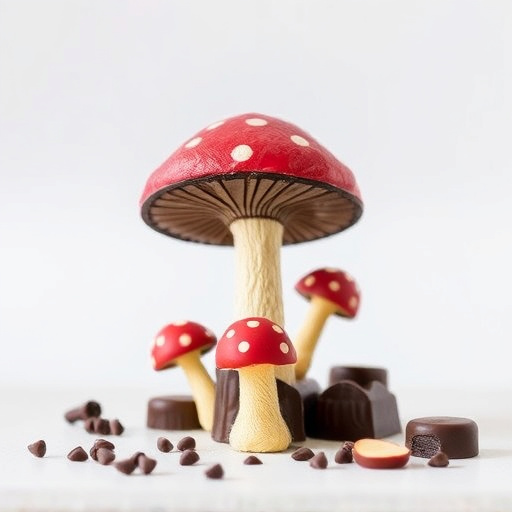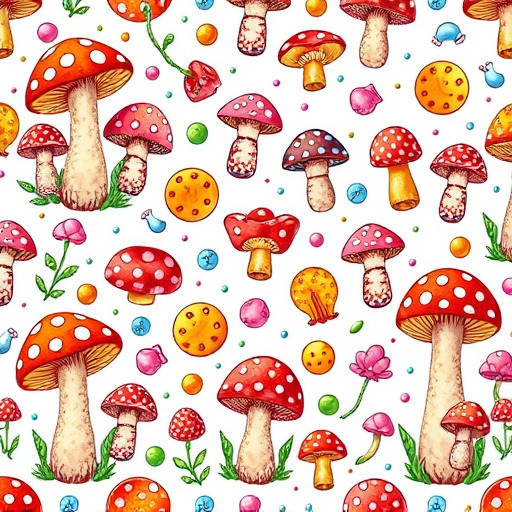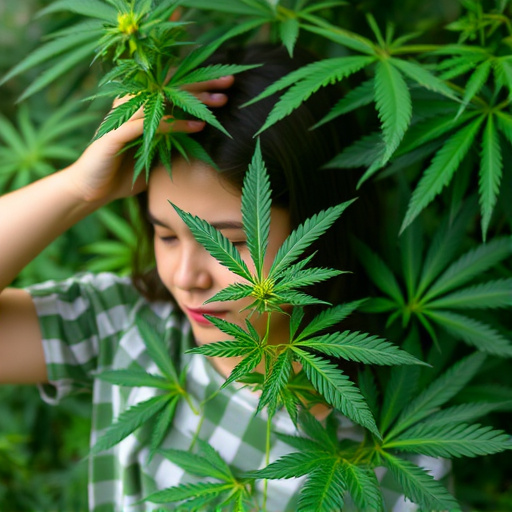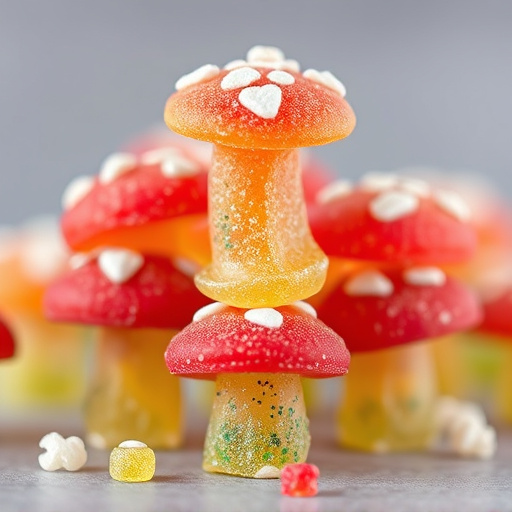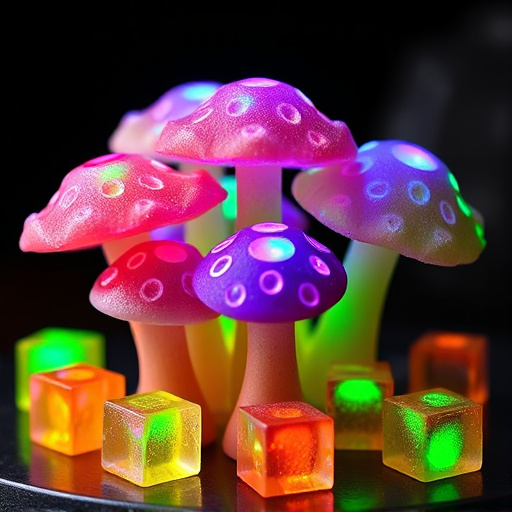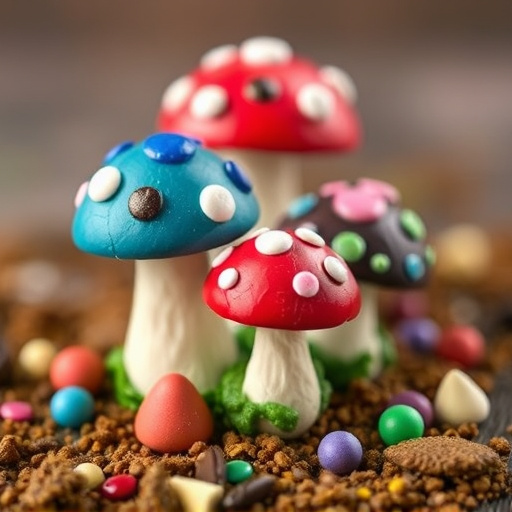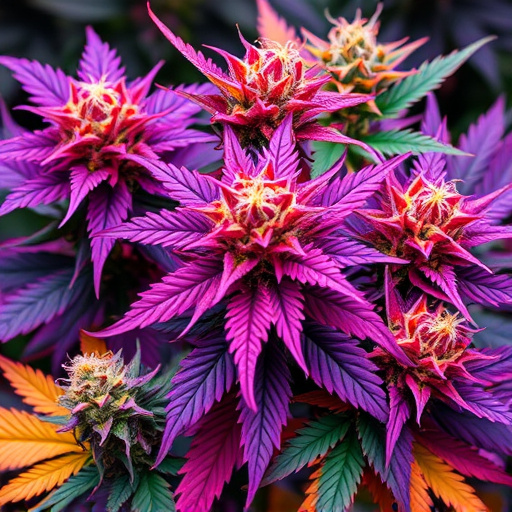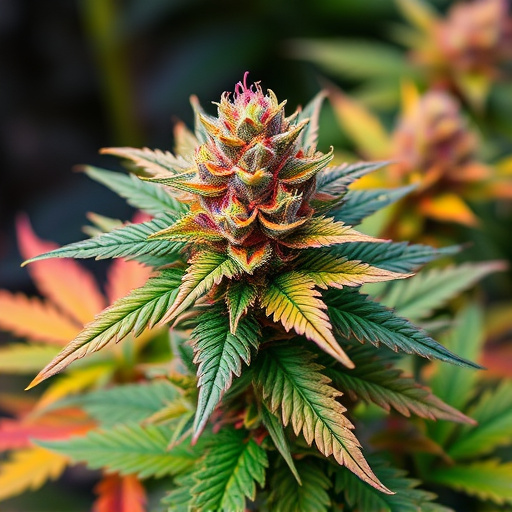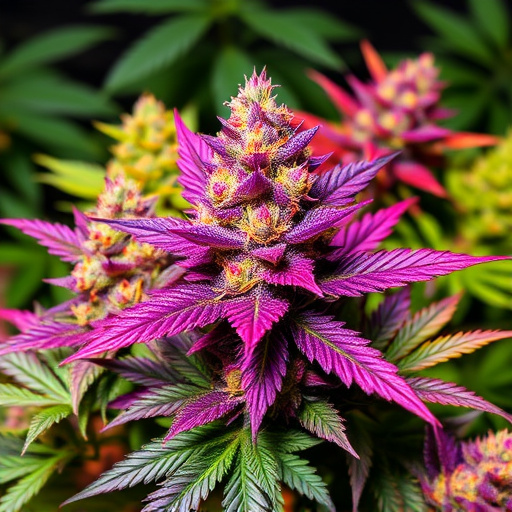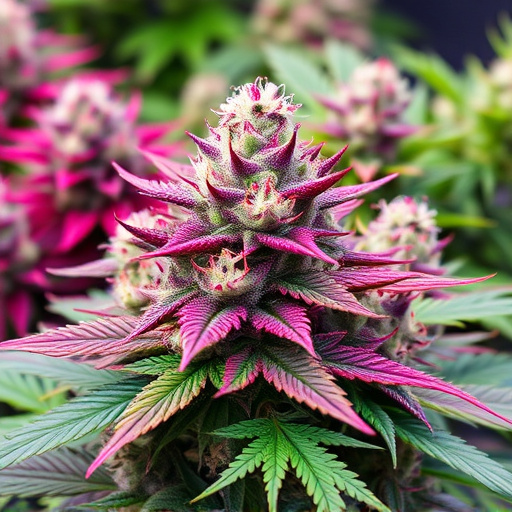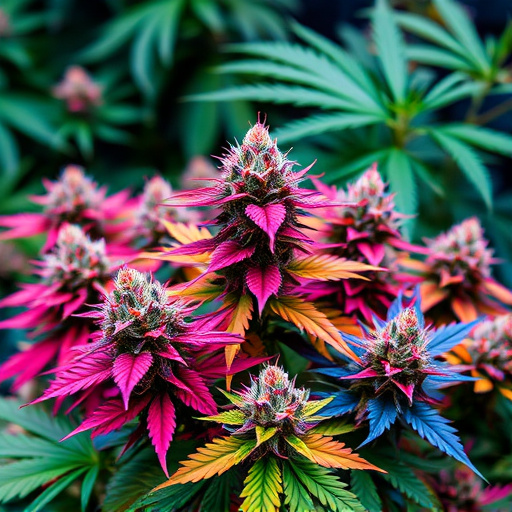Cannabis trichomes, tiny hair-like structures on cannabis plants, produce essential oils, terpenes, flavonoids, and cannabinoids like THC and CBD, contributing to the unique characteristics and potency of different colorful marijuana strains. Trichome density and color signal maturity and compound profiles, influencing strain effects. Visual inspection can determine THC/CBD content and terpene blends, guiding users to desired effects and sensory experiences.
“Unveiling the secrets behind cannabis trichomes, these microscopic marvels are key to understanding the diverse world of marijuana. In this comprehensive guide, we explore their basic structure, their pivotal role in defining the unique profiles of colorful marijuana strains, and how to identify different trichome types. From the subtle differences in appearance to their impact on flavor and effects, knowing trichomes empowers you to fully appreciate the complexities of these captivating plants.”
- Understanding Cannabis Trichomes: The Basic Structure
- The Role of Trichomes in Marijuana Strains: A Colorful Perspective
- How to Identify Different Trichome Types and Their Effects on Strain Profile
Understanding Cannabis Trichomes: The Basic Structure
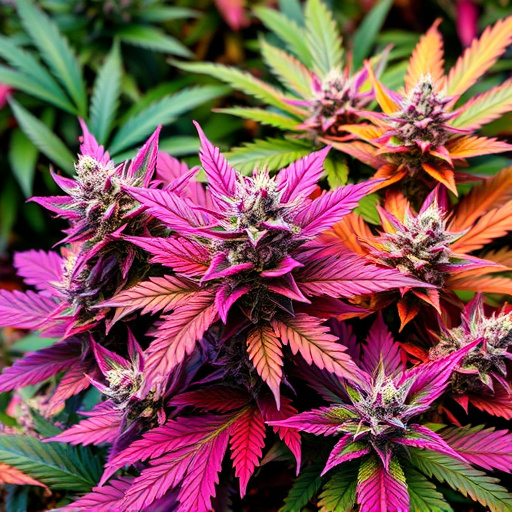
Cannabis trichomes are tiny, hair-like structures that cover the surface of cannabis plants, particularly on the flowers and leaves. These intricate glands play a vital role in the plant’s defense mechanism and are responsible for producing many of the compounds that contribute to marijuana’s unique aroma, flavor, and therapeutic effects. Each trichome is essentially a small sac surrounded by a hair-like cell, giving them a distinct appearance when examined under a microscope.
The structure of cannabis trichomes is quite fascinating. They are made up of several layers, including a sticky exudate that contains various chemical compounds. These compounds include terpenes, flavonoids, and most notably, cannabinoids like THC (tetrahydrocannabinol) and CBD (cannabidiol). The diverse array of compounds within trichomes contributes to the wide range of effects experienced by users, from the intoxicating high associated with potent colorful marijuana strains to the medicinal benefits attributed to non-psychoactive cannabinoids.
The Role of Trichomes in Marijuana Strains: A Colorful Perspective
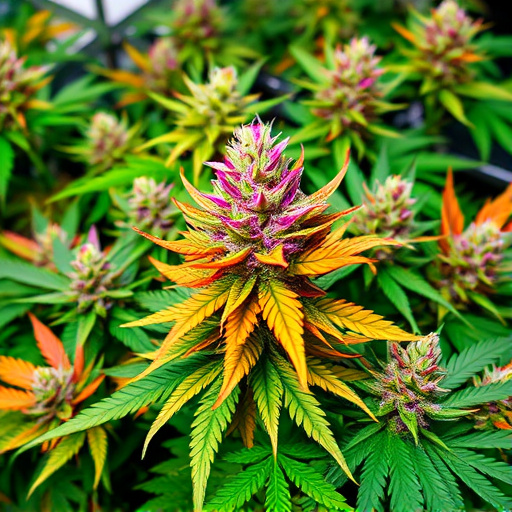
Cannabis trichomes, those tiny, hair-like structures that cover the surface of marijuana plants, play a pivotal role in shaping the unique characteristics of different strains. These glands, responsible for producing essential oils and cannabinoids, contribute significantly to the diverse range of colors and flavors found in colorful marijuana strains. Each color variation—from vibrant greens to rich browns and even rare pinks or blues—is not merely aesthetic but indicates specific chemical profiles and effects.
The presence and density of trichomes directly correlate with the potency and aroma of a strain. More abundant trichomes often mean higher concentrations of THC, CBD, and other cannabinoids, leading to more intense sensory experiences. Moreover, different colors in these trichomes suggest varying levels of maturity and terpene profiles, further enriching the sensory journey for consumers seeking specific effects or flavors in their colorful marijuana strains.
How to Identify Different Trichome Types and Their Effects on Strain Profile
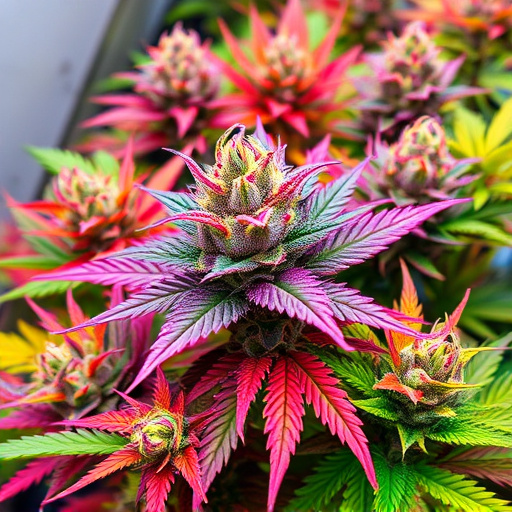
Identifying different trichome types is key in understanding the unique characteristics and effects of each cannabis strain. Trichomes are small, glandular hairs that cover the surface of marijuana flowers. They produce a wide range of compounds, including terpenes and cannabinoids, which contribute to the plant’s aroma, flavor, and therapeutic properties. Examining these trichomes under a magnifying glass or with a specialized microscope allows you to visually differentiate between them.
For instance, clear trichomes indicate a strain that may have higher levels of THC, often associated with more intense effects. Milky or amber-colored trichomes suggest the presence of more CBD, which is known for its potential medicinal benefits without the psychoactive effects of THC. Colorful marijuana strains, renowned for their diverse flavors and aromas, often display a spectrum of trichome colors reflecting the blend of terpenes and cannabinoids they contain. This visual diversity not only makes them appealing but also offers valuable insights into the expected strain profile and its potential effects on users.
Cannabis trichomes, with their diverse shapes, sizes, and effects, play a pivotal role in shaping the unique characteristics of colorful marijuana strains. Understanding these microscopic structures allows enthusiasts to appreciate the intricate interplay between trichome types and the final strain profile. Whether you’re seeking potent resin production for medicinal uses or vibrant colors for recreational enjoyment, recognizing different trichome types is key to navigating and appreciating the diverse world of cannabis.

